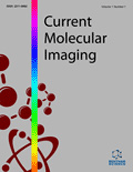Abstract
Semantic Dementia (SD) is classified as a type of Frontotemporal Lobar Degeneration (FTLD) characterized by progressive impairment of conceptual knowledge, accounting for approximately 30% of cases of FTLD. Clinical symptoms and brain Magnetic Resonance (MR) imaging are helpful to reach the diagnosis in the advanced stage, but brain positron emission tomography with [18F] Fluoro-2-Deoxy-D-Glucose (FDG-PET) might be useful to evaluate and distinguish the early stage of SD. This review summarizes 9 studies using FDG-PET with either SPM or three-dimensional stereotactic surface projection statistical software to elucidate the features of SD. The main hypometabolic lesions associated with SD were located in the bilateral temporal lobes. The so-called core lesions were predominantly located in the left and anterior and lower parts of the temporal lobe. Hypometabolism on FDGPET was more extensive than atrophy detected on MR imaging in the temporal lobes and especially involved the bilateral orbitofrontal areas, right caudate nucleus, and insula. FDG-PET is very helpful to diagnose SD in the early to advanced stages.
Keywords: Semantic dementia, PET, statistical analysis, FDG.
 2
2

